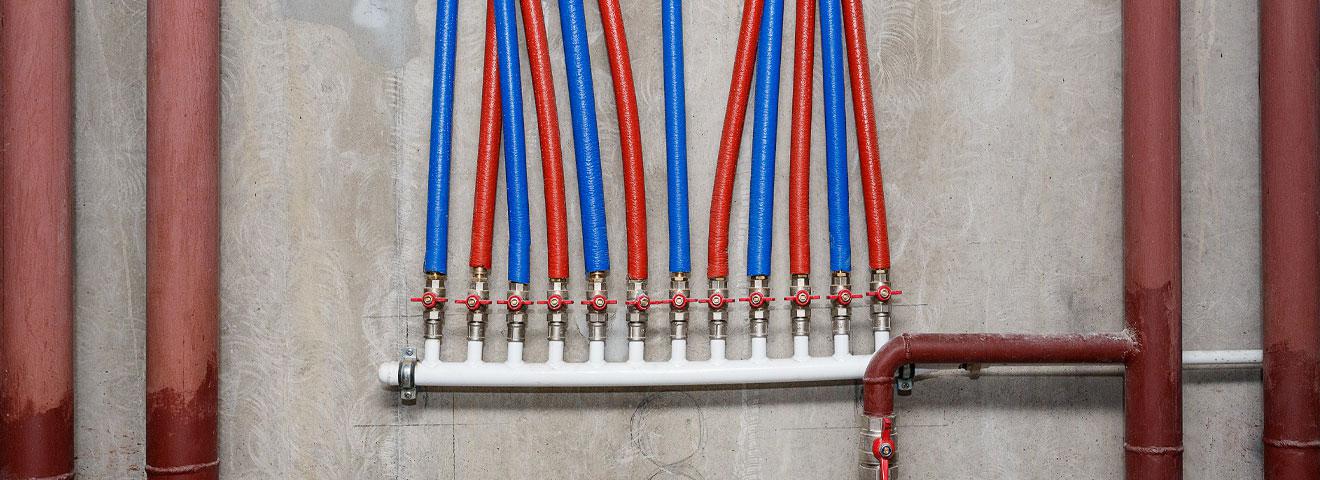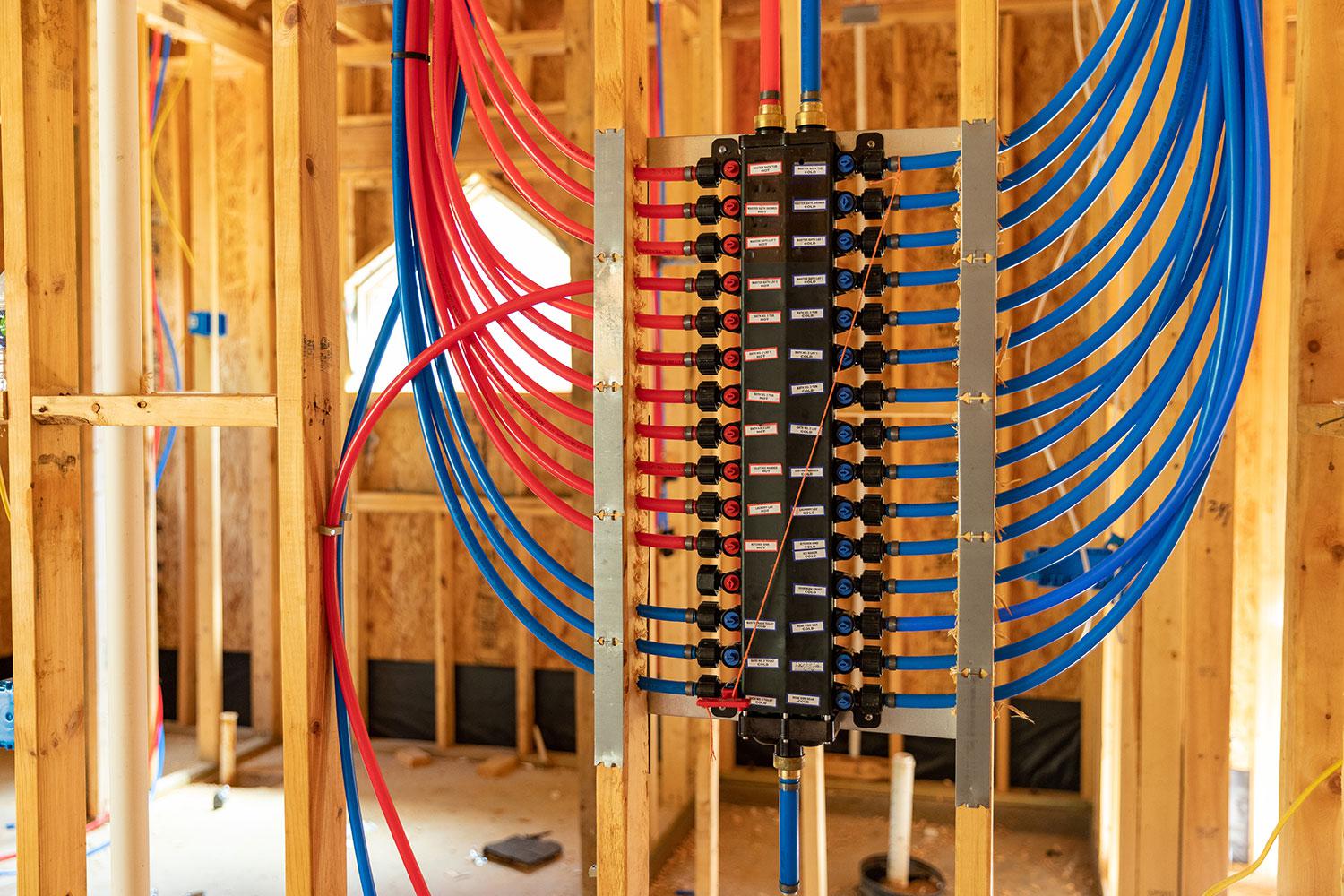
PEX piping or cross-linked polyethylene is a type of flexible piping that has been gaining popularity recently. As an alternative to copper and galvanized piping, PEX synthetic piping is a favorite among DIYers and in new construction projects.
We’ll explain how PEX plumbing is used and go over the pros and cons for you.
PEX Piping 101
Cross-linked polyethylene was invented in the late 1960s and started appearing in homes and new construction in the U.S. in the ’80s and ’90s. First used for radiant floor heating, PEX quickly became popular due to its price, performance, and flexibility.
PEX is unique because it’s produced by linking polymer molecules in polyethylene which increases its flexibility and durability.

PEX pipe manifold in new construction
PEX Pipe Advantages
There are many benefits of PEX piping, including:
- Lower cost to install. PEX costs roughly the third of the price that copper piping costs. And if you’re looking for whole-home piping in new construction, the cost savings can really add up. Also, the price of copper varies in different markets while PEX is less prone to price changes.
- Corrosion resistance. Unlike galvanized steel pipes and copper piping, PEX is resistant to corrosion, mineral buildup, and erosion.
- Ease of installation. For many minor DIY projects, it doesn’t require a plumbing license to do your own PEX pipe installation (although there are special tools). For example, one can replace old pipes in a leaky sink. Since PEX is flexible, it allows for easy installation in hard to reach places.
- Efficiency. PEX pipes have a smaller diameter than other types of pipes, so the wait for hot water is shorter, resulting in less waste of water. Additionally, PEX material has greater thermal conductivity properties than other types of pipes which reduces heat loss.
- Quiet operation. You won’t have to worry about pipes rattling with PEX since they made out of synthetic plastic.
PEX Pipe Disadvantages
- Installation errors. While some people may find PEX installation to be easy, others may be in over their heads. We recommend leaving pipe installation up to the professionals, especially if it involves more moving parts, running lines from other rooms, or in brand new construction.
- Heat damage. PEX is susceptible to failure in high-heat situations so it cannot be installed directly to water heaters (although there are connection materials to workaround). It also cannot be placed near recessed lighting.
- UV light. PEX is very sensitive to UV light, so it’s important that all PEX piping be hidden from direct sunlight and UV lightbulbs. Many manufacturers recommend total darkness for PEX pipes so this limits where it can be installed.
- Chemical issues. Some types of PEX have been known to leach toxic chemicals like BPA and other contaminants. PEX can also be damaged due to high levels of chlorine in the water. Always have your water tested before PEX installation to see if it’s suitable to use.
- Permeability. Since PEX is plastic, there’s a likelihood of damage, and rodents can even chew through the pipes. PEX is not suited for outdoor installation or exposure to elements. PEX is permeable which means liquids can enter the pipe.
Always do your research and consult with a plumber before you install PEX pipes in your home.
Plumbing Services in Atlantic County, NJ
Benjamin Franklin Plumbing is your local professional plumbing company. Our skilled plumbers are available 24/7 to assist you with all of your plumbing needs. Contact us today for plumbing services.
